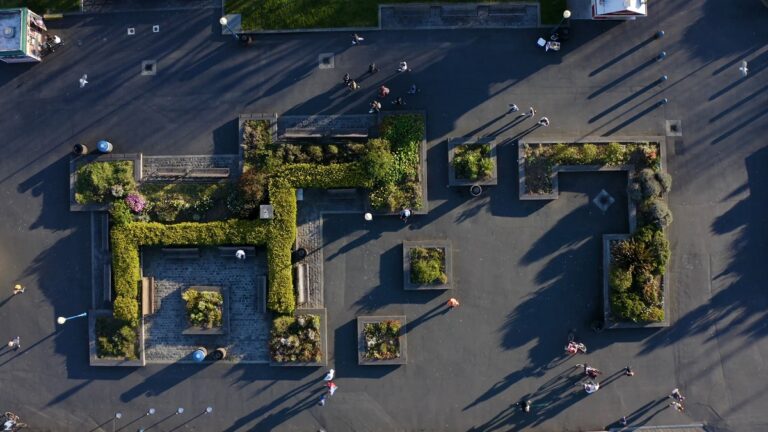As cities worldwide grapple with heat waves, pollution, and climate change, urban gardens have emerged as a powerful, scalable solution.
Far beyond aesthetic improvements, these green spaces actively capture carbon, reduce urban heat, and filter airborne pollutants, while fostering community resilience and biodiversity in dense urban environments.
In 2025, with global urban populations exceeding 57% of the total population (UN DESA), the need to tackle air pollution and cut emissions in cities is urgent.
The World Health Organization reports that 99% of the global population breathes air exceeding WHO guideline limits, with urban residents disproportionately affected by asthma, cardiovascular disease, and premature mortality due to poor air quality.
Ways Urban Gardens Help Clean the Air
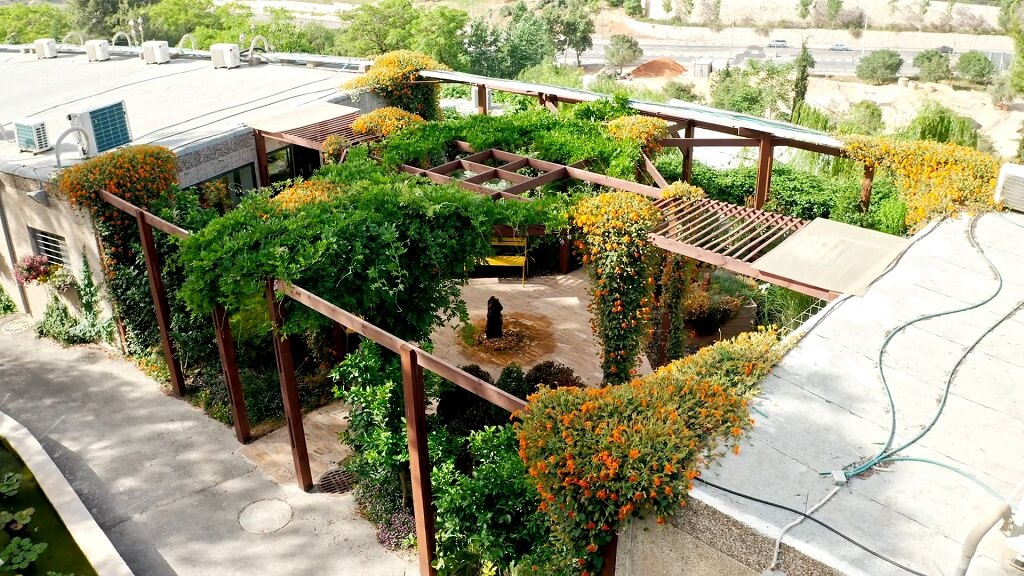
Urban gardens contribute to cleaner air through:
- Particulate Matter (PM) Filtration: Leaves and soil surfaces capture PM2.5 and PM10, which are linked to lung and heart diseases.
- Volatile Organic Compounds (VOCs) Uptake: Certain plants, like ivy and spider plants, absorb VOCs from vehicle and industrial emissions.
- Heat Island Mitigation: By shading surfaces and enabling evapotranspiration, urban gardens reduce city temperatures, indirectly cutting energy demand and emissions.
- CO₂ Sequestration: Green plants absorb atmospheric CO₂ during photosynthesis, removing greenhouse gases from the urban atmosphere.
Supporting Studies
A 2024 Lancet Planetary Health study found that a 10% increase in urban green cover can reduce urban PM2.5 concentrations by up to 7%.
Similarly, a 2023 UC Berkeley Environmental Sciences study showed that a 2-acre rooftop garden in downtown Oakland reduced local air temperatures by 2°C during peak heat, improving surrounding air quality and reducing the need for air conditioning in nearby buildings.
Moreover, research in Barcelona revealed that green roofs can sequester 168 g CO₂/m²/year, which, when scaled across city rooftops, could offset emissions equivalent to removing thousands of cars from the streets annually.
Air Quality Impact of Urban Gardens
| Impact Area | Reduction Potential | Study/Source |
| PM2.5 Concentration | 7% reduction with 10% green cover increase | Lancet Planetary Health, 2024 |
| Urban Air Temperature | 2°C reduction near rooftop gardens | UC Berkeley, 2023 |
| CO₂ Sequestration | 168 g/m²/year on green roofs | Barcelona Urban Greening Study, 2023 |
| VOC Reduction | 60% reduction around vertical gardens | Nature Urban Ecology, 2022 |
| Noise Pollution | Up to 3 dB reduction | Journal of Environmental Management, 2022 |
Cutting City Emissions Through Green Infrastructure
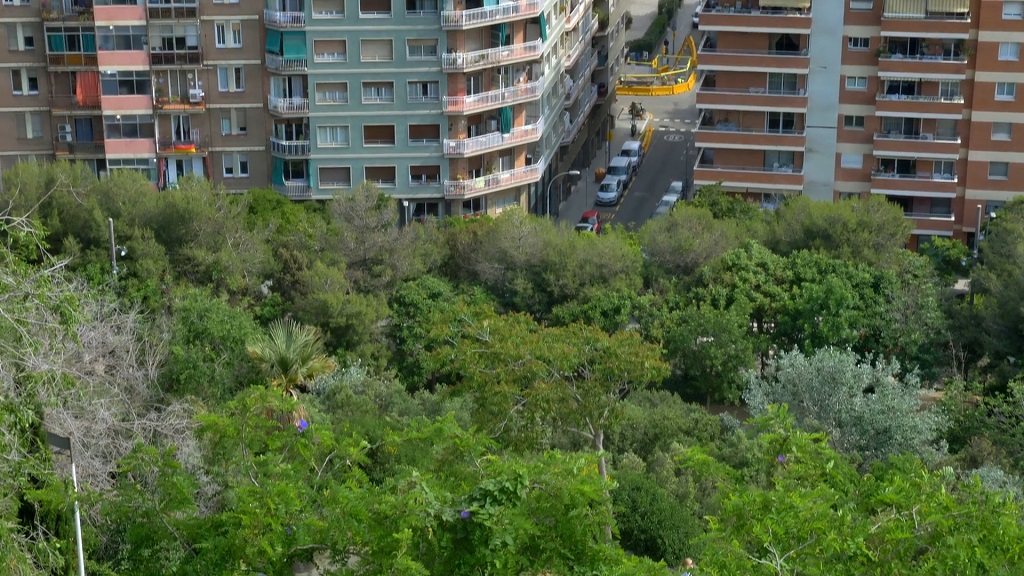
Urban gardens reduce emissions in cities in three direct ways:
- Lowering Building Energy Demand – Green roofs and walls insulate buildings, reducing the need for air conditioning in summer and heating in winter. A 2025 MIT Energy Initiative report found that green roofs can reduce energy demand by 10-15%, which translates into lower fossil fuel consumption and associated CO₂ emissions.
- Supporting Local Food Systems – Community gardens reduce food miles, cutting transport-related emissions. According to a 2024 USDA study, urban gardens supplying local produce can reduce food-related emissions by 12-15% in participating cities.
- Stormwater Management and Reduced Energy Use – Urban gardens improve stormwater retention, reducing the energy burden on municipal water systems, indirectly lowering emissions associated with water treatment and pumping.
Case Study: New York City
New York City’s GreenThumb program has expanded to over 600 community gardens, collectively reducing emissions by an estimated 1,500 metric tons of CO₂ annually through local food production, reduced heat island effects, and energy savings.
Money-Saving Solar Options: A Synergy with Urban Gardens
Pairing money-saving solar options with urban gardens amplifies their environmental and economic benefits:
Solar Pergolas Over Community Gardens
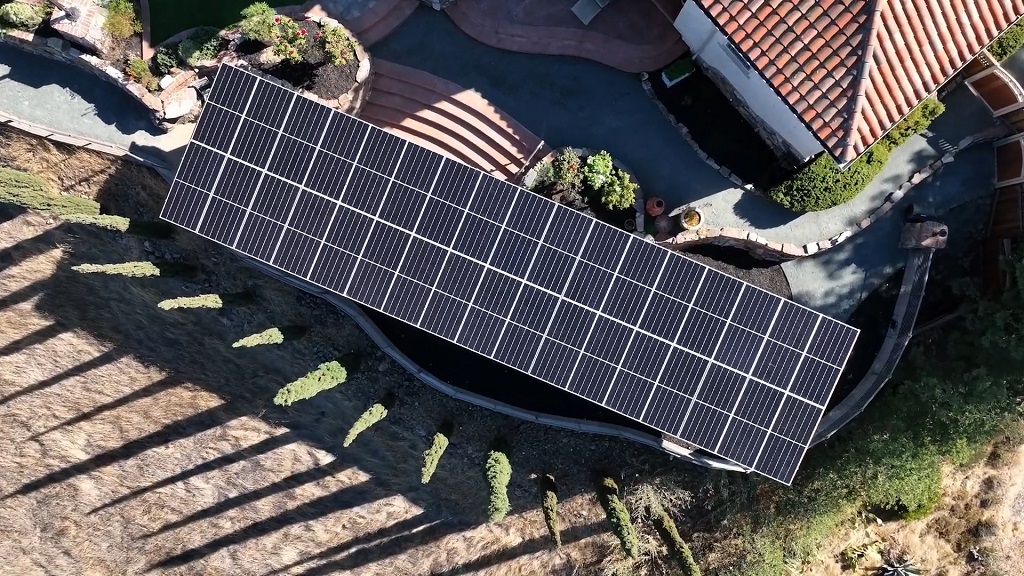
Solar pergolas are structures equipped with photovoltaic panels that provide filtered shade over garden beds while generating renewable electricity for local use. By reducing direct sun exposure, pergolas help protect sensitive plants from excessive heat, decreasing water evaporation and irrigation needs.
At the same time, the electricity generated can power community garden lighting, shared refrigeration for harvested produce, or nearby community centers, lowering operational costs and carbon footprints.
In cities like Los Angeles and Austin, pilot programs have demonstrated that solar pergolas can generate 1–2 kW of power per structure, enough to offset the energy needs of irrigation pumps or perimeter lighting while improving plant survival rates during heat waves.
Agri-Photovoltaics
Agri-photovoltaics, also known as agrivoltaics, involves installing elevated solar panels above crops to create a dual-use system that produces food and energy simultaneously. Panels are strategically spaced to allow sufficient sunlight for crops while generating electricity.
The shade created by the panels can lower air and soil temperatures, reducing water usage by up to 20% and improving certain crop yields in hot climates.
Studies from the Fraunhofer Institute in Germany and trials in Japan and Arizona show that agri-photovoltaic systems can increase overall land productivity by up to 60% compared to traditional single-use approaches.
For urban environments, agri-photovoltaics can be applied in urban farms, peri-urban food belts, and larger community garden projects, enabling cities to generate renewable energy while strengthening local food systems.
Rooftop Solar and Gardens Integration
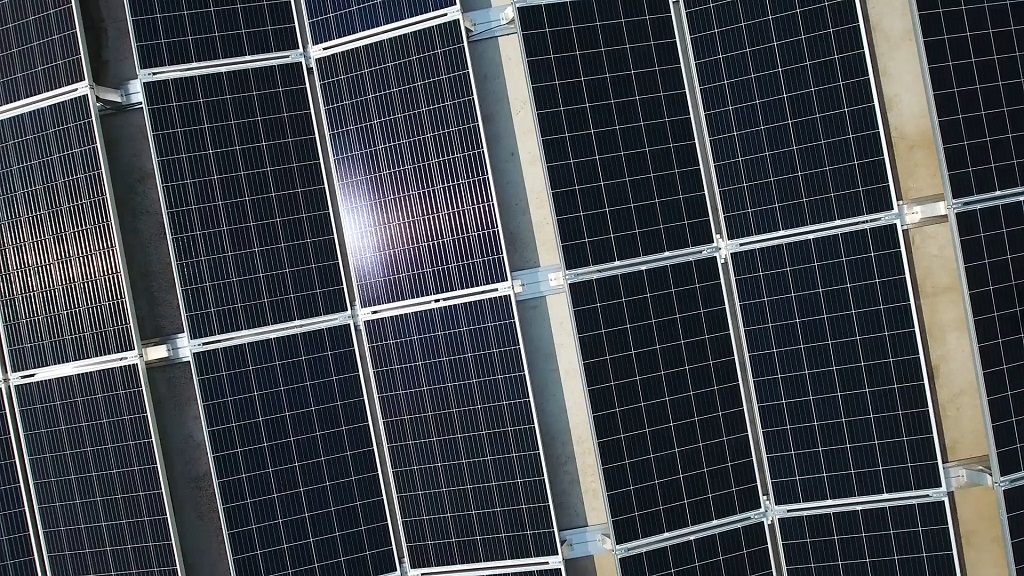
Rooftops in dense cities are valuable real estate for sustainability initiatives. Combining rooftop gardens with solar panels creates a symbiotic system: plants cool the ambient air around the panels, increasing their efficiency by up to 3–5%, while the panels provide partial shading to reduce heat stress on plants.
The presence of the garden also improves roof insulation, reducing heat transfer into the building and lowering cooling costs during summer months.
For multi-unit apartment buildings, schools, and community centers, this integration can significantly reduce energy bills while providing fresh produce for residents or local food programs.
A 2025 NREL study found that buildings with combined solar and green roofs saved up to 20% on energy bills annually, while generating enough electricity to cover a significant portion of communal energy needs.
A 2025 report by the National Renewable Energy Laboratory (NREL) found that co-locating solar panels with rooftop gardens can reduce panel temperatures by up to 10°C, increasing efficiency by 3-5% while saving up to 20% on building cooling costs.
These money-saving solar options, when coupled with urban gardens, not only cut emissions and energy bills but also improve building longevity, reduce maintenance costs, and create resilient community infrastructure.
Challenges and Solutions
While urban gardens offer clear benefits, scaling them in dense cities faces challenges:
- Limited Space: Innovative solutions like vertical gardens, hydroponic systems, and converting vacant lots can overcome space constraints.
- Maintenance and Water Use: Installing automated irrigation systems using harvested rainwater can reduce water demand and maintenance burdens.
- Policy Barriers: Many cities are adopting incentives, such as New York’s Green Roof Tax Abatement and San Francisco’s Living Roof Ordinance, to encourage developers and property owners to install green infrastructure.
Final Thoughts
In 2025, urban gardens are no longer optional beautification projects; they are essential tools in cities’ strategies to combat air pollution and climate change while improving community health and quality of life.
They reduce PM2.5, lower urban temperatures, cut emissions by reducing energy demand, and can work synergistically with money-saving solar options to further decarbonize city blocks.
With continued investment, supportive policies, and community participation, urban gardens can transform cities into healthier, cooler, and more sustainable places to live.
If you are a city planner, developer, or community organizer, consider prioritizing urban garden initiatives alongside solar integration as part of your sustainability strategy.
These combined efforts will help your city breathe easier while contributing to your climate goals in a cost-effective, community-strengthening way.

